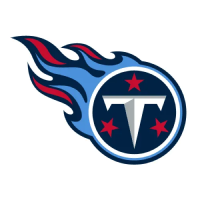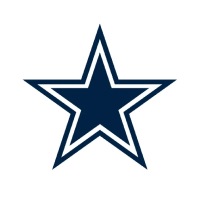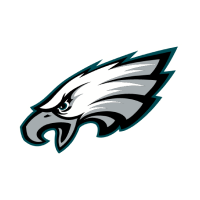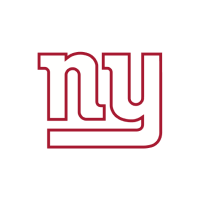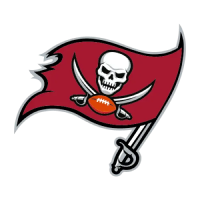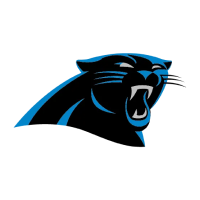Data and analysis provided by the staff at BetPrep. BetPrep is the first in-game odds and analytics platform for sports bettors.
Sign up for free now to practice betting with virtual bucks and without risking any real money in our virtual sportsbook.
The Future of Sports betting is here.
NFL draft prospects get ranked in a vacuum. Whoever gets the higher grade gets the highest ranking and is presumably the better pick. But what if teams have more demonstrable success in scouting certain positions and have quantifiably less ability to forecast prospects at others? Then it may make more sense to trust the rating of the former and not invest as much draft capital in the latter. Otherwise, if you’re a GM, you seem to be engaging in the Dunning-Kruger Effect of overestimating yourself.
Mock drafts are mostly focused on who is “the best available athlete.” For example, it’s widely reported that in the 2021 draft, the best prospect at any position is Florida tight end Kyle Pitts—never mind that the NFL according to the franchise tag numbers values the position of tight end at basically a running-back level. So how valuable is it exactly to have the best item in the discount bin?
If the draft is about surplus value, and how can it not be in a salary-capped league, then a team needs the player it’s drafting to be a tremendous financial bargain if the pick turns out right. But in Pitts’ case, the No. 4 overall pick in the NFL draft is guaranteed about the same money as the best tight end in football; so the team that drafts Pitts is arguably not saving anything or getting any salary-cap benefit.
Let’s look at recent drafts and try to figure out how well teams draft prospects at the various positions on average in the first round. And let’s adjust their success for the price they paid (the position’s first-round ADP on average) while also considering the way the league pays each position at the very top of the performance scale (the current franchise number). For the raw pick grade each pick, we’re using Pro-Football-Reference.com’s weighted career approximate value (CarAV), which rewards a player for his contribution to a team’s points scored and prevented as well as overall performance in other key statistics. CarAV is normalized so that the position of the player does not matter.
Here’s just 2018-20 so we’re sampling people still in charge of drafts. We’ve also adjusted all the CarAV for the number of years a player has been in the league. If they didn’t start yet, well that says a lot because first-round picks are supposed to start immediately. We’ll sort by Car/AV per years since they were drafted:
| Position | # of Picks | CarAV/Year | Avg. Pick | CarAV Adjusted for Slot Value | CarAV Adjusted for Cap Value |
|---|---|---|---|---|---|
| QB | 12 | 7.8 | 9.4 | 4.58 | 7.80 |
| LB | 12 | 6.75 | 15.4 | 6.50 | 3.98 |
| WR | 10 | 6.7 | 21.9 | 9.17 | 4.27 |
| C/G | 6 | 6.5 | 16.3 | 6.62 | 3.56 |
| RB | 5 | 6.2 | 23.2 | 8.99 | 2.14 |
| DE | 9 | 6.1 | 13.1 | 4.99 | 3.90 |
| S | 5 | 5.8 | 20.8 | 7.54 | 2.45 |
| DT | 11 | 5.8 | 14.9 | 5.40 | 3.21 |
| OT | 12 | 5.4 | 17.3 | 5.84 | 2.96 |
| TE | 3 | 4.1 | 17.7 | 4.54 | 1.57 |
| CB | 10 | 3.6 | 19.0 | 4.28 | 2.16 |
These are tiny samples, just the first round for three years. The number of selections is noted. The takeaway is that teams are relatively good at drafting wide receivers, adjusting for where they are selected on average (overall pick 21.9). Who cares how well you draft running backs and safeties when they’re relatively cheap in the open market. Interior linemen, conversely, actually cost a lot of money in free agency; so the success teams have in identifying interior linemen can be better leveraged into salary cap value.
Teams are paying a lot to draft QBs well—a pick inside the top 10 on average—but who cares because when you factor in how much QBs are worth, you can’t pay too high a price to draft one if the pick works.
But teams are just HORRIBLE at drafting cornerbacks to the point where if a team is thinking of a cornerback in the first round, it’s probably a bad idea. They’re also much better at finding linebackers than defensive ends, though we don’t have the all-encompassing “EDGE” position in the database (EDGEs can be LBs or DEs).
It’s surprising that teams have been so much better with interior linemen than with OTs, but there are half as many; so perhaps they’re just getting a much better interior prospect on average. (Note we’re not accounting for players who are drafted as OTs and moved inside to guard. We’re looking at draft position only, according to Pro Football Reference).
Yes, it’s a tiny sample. So let’s forget about the recent years and only look at how positions have been drafted for the entire century for every player whose rookie deal is in the books. We can’t adjust for years played, obviously, just their career value to date, which for every pick is at least through their rookie deal. A complicating factor is that the data on draft positions is more general dating back to 2000. So we need to lump all DBs together and all LBs together, for example. Nose tackles and defensive tackles are coupled, but that’s not nearly as big a deal. Fortunately, the differences are marginal since relatively few inside linebackers, nose tackles, and safeties get drafted in the first round.
Again this chart is 2000-2016 (meaning all players have had a chance to play their entire rookie contract).
| Position | # of Picks | CarAV (total) | Avg. Pick | Adjusted for ADP | Adjusted for Current $$$ |
|---|---|---|---|---|---|
| QB | 45 | 52.9 | 10.6 | 35.05 | 52.90 |
| LB | 53 | 48.4 | 15.7 | 47.49 | 28.52 |
| C/G | 26 | 47 | 22.8 | 66.98 | 25.75 |
| OT | 62 | 46.1 | 13.2 | 38.03 | 25.26 |
| RB | 42 | 43.5 | 17.4 | 43.71 | 15.00 |
| DE | 69 | 41.9 | 15.7 | 41.11 | 26.82 |
| DT | 56 | 40.5 | 16.1 | 40.75 | 22.41 |
| DB | 96 | 37.3 | 18.6 | 43.36 | 22.38 |
| WR | 70 | 36.04 | 16.8 | 37.84 | 22.95 |
| TE | 18 | 33.2 | 21.9 | 45.44 | 12.70 |
The big difference is that teams have recently gotten A LOT better at drafting wide receivers recently (2018-20) than historically (2000-16). And they’re even taking them later now than previously, so they’re getting MUCH better outcomes at wide receiver plus MUCH cheaper pick equity. Maybe it’s because college teams are passing more? But then why isn’t that helping identify corners? NFL teams have been rotten at drafting corners the entire century.
The data sets are largely in sync. Linebackers again were much easier picks than defensive ends (even at the same price, on average). Interior linemen again were much easier to hit on than tackles adjusting for their much cheaper average price. Tight end again is a wasteland in terms of outcomes and far, far worse adjusting for their lack of surplus value (considering the cost of a “franchise” tight end).
So why all the buzz about Pitts? He’s the favorite currently to be the first non-QB taken. His over/under is a pick higher than Ja’Marr Chase. You can’t bet on teams to be smart or self-aware, I know, but isn’t Chase a no-brainer given you just line him up at receiver and he’s clearly the best receiver AND receiver is much easier to project? While Pitts is a unicorn, he’s still a unicorn tight end. That means whoever drafts him is going to need a unicorn offense to maximize his usage and productivity. It’s a challenge for the coaching staff to adjust to having Pitts. Conversely, Chase is plug-and-play in any offense.
The other interesting bet that could be impacted if teams are grading themselves and the league objectively is the number of offensive linemen drafted in the first round. The over/under for total linemen taken is 6.5. What if the guards and centers are taken at the end of the first round just because teams can never have too many top linemen who are super cheap and because these interior linemen are so easier for teams to project into the NFL? Then we’d end up finishing Round 1 with four or five tackles drafted PLUS two or three guards and maybe even a center (two-time Big 12 Offensive Lineman of the Year Creed Humphrey). And, probably, a few less busts if they come at the expense of the cornerback position.
Filed In
Related Articles
NFL Draft
Arik Gilbert Doesn’t Need Big Workload To Be A Top NFL Draft Pick
- Aug 22, 2022
NFL Draft
2023 NFL Mock Draft: Marino 1.0
- Aug 22, 2022
Written By









